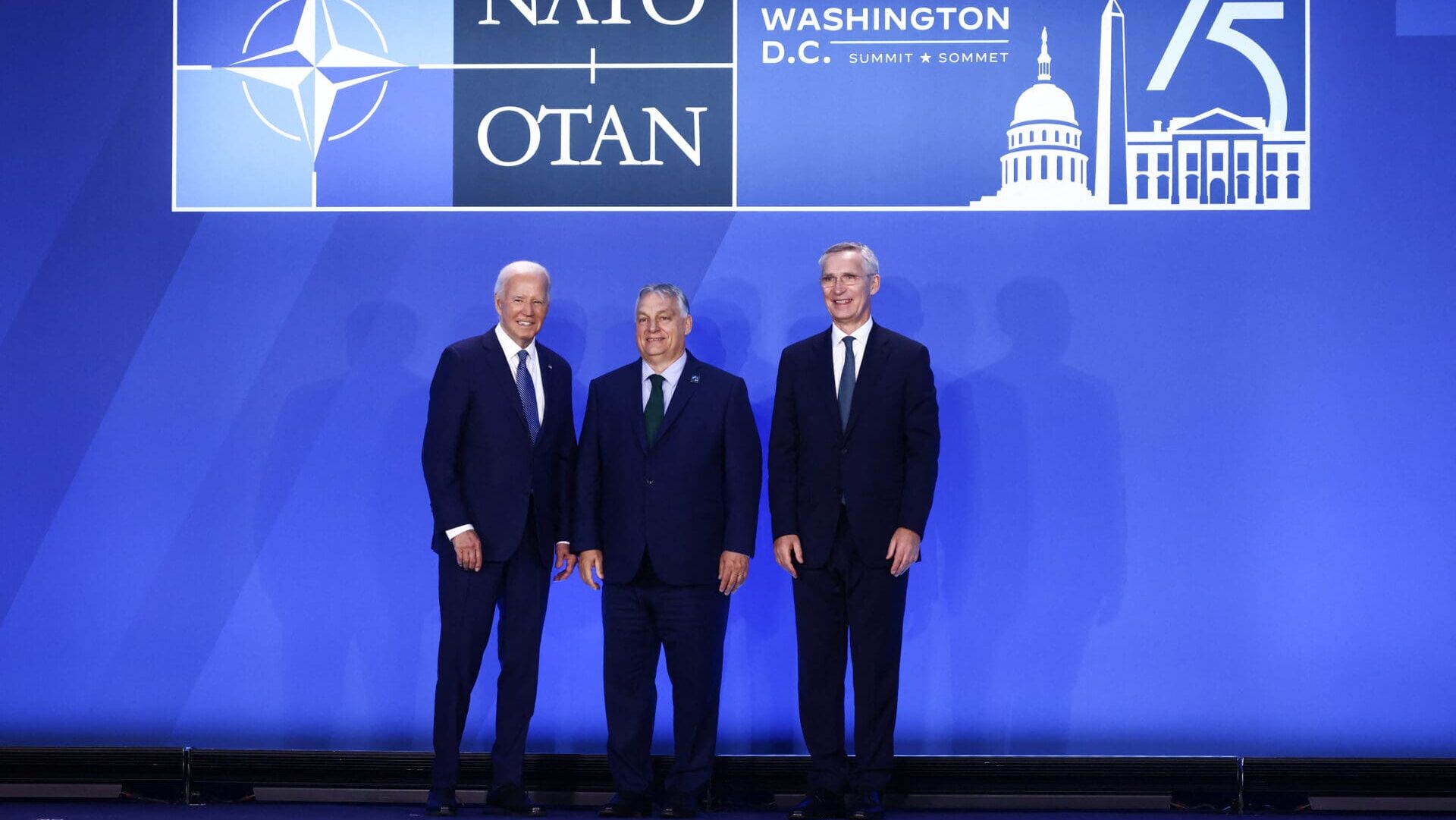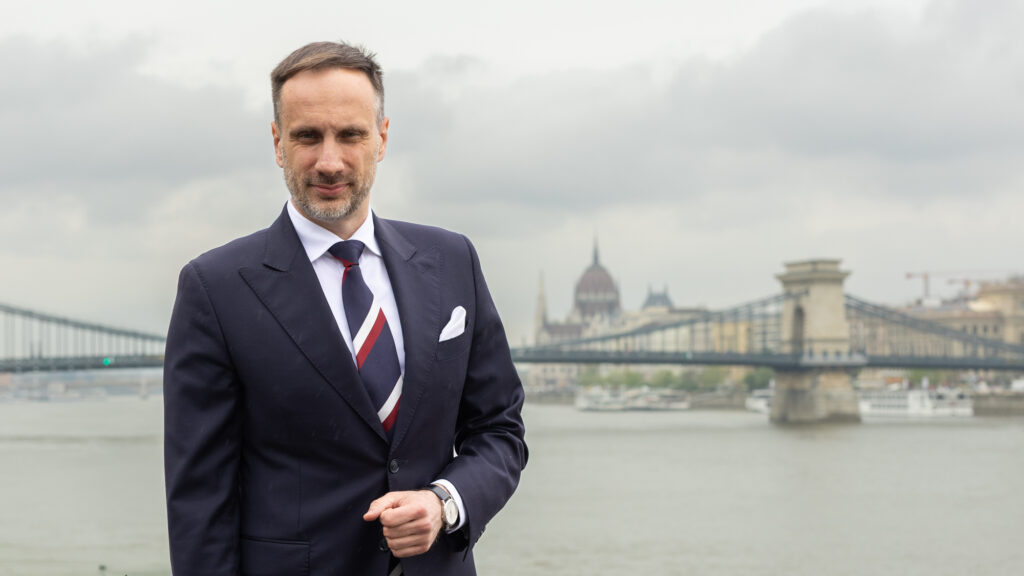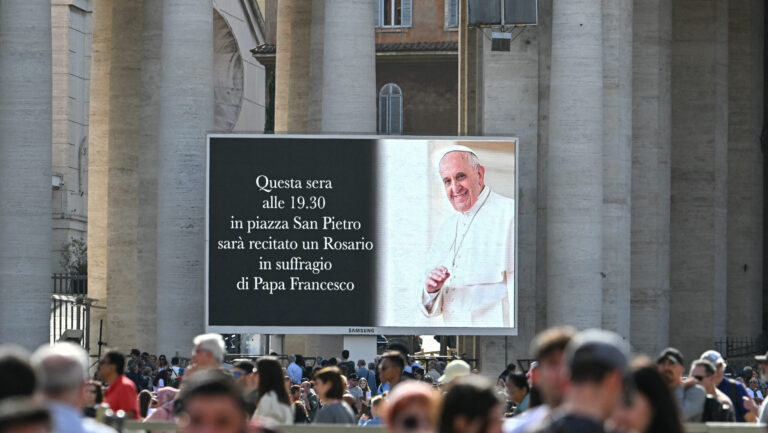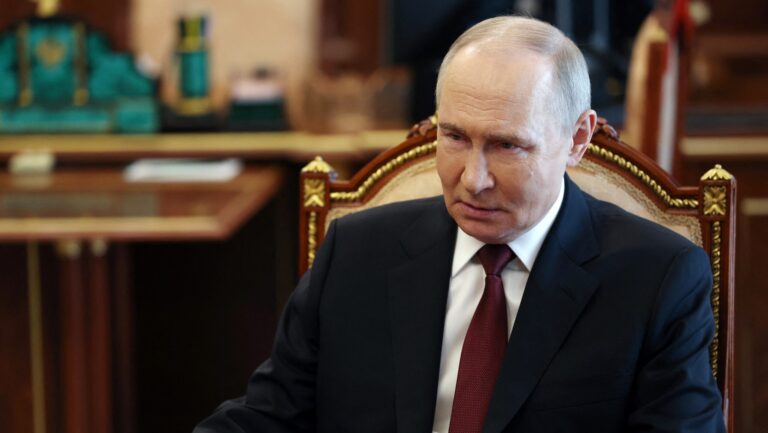The two-day NATO summit in Washington, DC, is now reaching its closing day. This event is not only significant for the war in Ukraine but also symbolic, as the defence alliance celebrates its 75th anniversary this year. As is customary at European Council meetings, two camps are clashing—albeit with one far smaller than the other: the pro-peace and the pro-war camp.
Hungarian Prime Minister Viktor Orbán is also using the NATO summit to continue the peace mission he launched in Kyiv last week. Speaking from Washington, the prime minister stated that NATO should aim to secure peace, not engage in wars. He reminded that NATO was founded 75 years ago to protect the security of its members. Today, however, it appears to be deviating from its original purpose, while starting to behaving like a war organization. One indication of this, he pointed out, is NATO’s increasingly active role in the war in Ukraine.
‘We think this is dangerous and even irresponsible because no one can predict how this will end or where it will lead,’ PM Orbán opined. He argued that
NATO should return to its original principles.
The prime minister emphasized that Hungary would continue to opt out from NATO’s mission in Ukraine. On the other hand, the country would fully comply with its obligations to develop Hungarian defence capabilities.
75 years ago, #NATO was created as a peace project. On behalf of Hungary, I will argue that we should preserve NATO as it was meant to be: a defence alliance. #NATOSummit pic.twitter.com/AyCJm6TvAO
— Orbán Viktor (@PM_ViktorOrban) July 10, 2024
Further Away from Peace?
Despite PM Orbán's efforts, the decisions made on Wednesday do not appear to favour peace. Outgoing NATO Secretary General Jens Stoltenberg announced that Ukraine’s path to NATO membership is irreversible. He stated that the decisions focused on increasing aid to Ukraine, with the bulk of international security assistance now being coordinated by NATO. Additionally, NATO will coordinate the training of Ukrainian forces on the territory of member countries.
Stoltenberg stated that the decisions made in support of Ukraine do not make the alliance a party to the conflict but help Ukraine exercise its right to self-defence. He explained that these measures are intended to bring the war to an end, noting that ‘the more credible and lasting the support, the faster Moscow will realise that it cannot tire us out.’
The NATO Summit statement released on Wednesday declared that Ukraine’s future lies in NATO, affirming that the Alliance ‘will continue to support Ukraine on its irreversible path towards full Euro–Atlantic integration, including NATO membership.’ Regarding a formal invitation to NATO, the statement noted that this would occur when there is agreement among the allies and Ukraine meets the necessary conditions.
The joint document agreed upon by the heads of state and government also emphasizes that NATO does not seek conflict with Russia and does not pose a threat to it. It highlights the importance of keeping channels of communication open to reduce risk and prevent escalation.
The Secretary General also reported that NATO had recently implemented the most comprehensive defence plan since the Cold War,
with 500,000 troops currently on standby within the alliance.
He attributed this achievement to the historic increase in defence spending by member states. ‘In 2014, when the requirement for member states to spend 2 per cent of GDP on defence was established, only 3 allies met this target. Today, that number has risen to 23,’ he underlined.
The NATO summit in Washington continues on Thursday, with the heads of state and government of the member countries being joined by representatives of the European Union and several leaders from the Indo–Pacific region. This will be followed by the NATO–Ukraine Council, which will be attended by Ukrainian President Volodymyr Zelenskyy.
Related articles:








